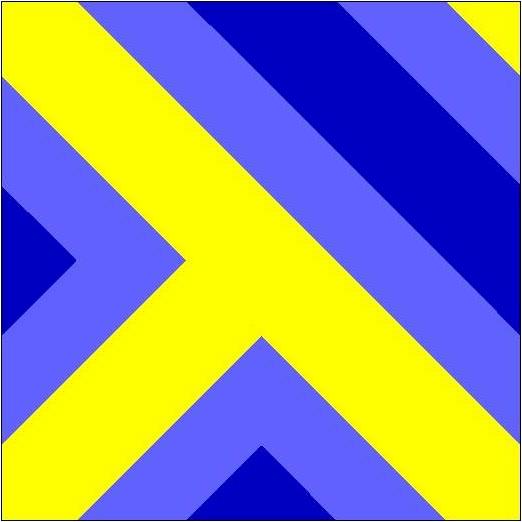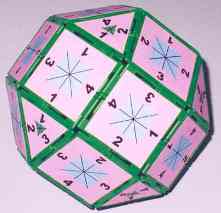 In this first photo: the right hand side is obtained from the left hand side using the identity permutation of the numbers
In this first photo: the right hand side is obtained from the left hand side using the identity permutation of the numbers In this second photo: the right hand side is obtained from the left hand side using the permutation (25)(34) of the numbers
In this second photo: the right hand side is obtained from the left hand side using the permutation (25)(34) of the numbers In this third photo: the right hand side is obtained from the left hand side using the permutation (13)(24) of the numbers
In this third photo: the right hand side is obtained from the left hand side using the permutation (13)(24) of the numbers In this fourth photo: the right hand side is obtained from the left hand side using the permutation (354) of the numbers
Dodecahedron (2) puzzle
In each of these photos one can see one of the six natural solutions of the dodecahedron (2) puzzle. This solution is easily recognized because it has the same numbers assigned to orthogonal edges. It is symmetric by a reflection or a central symmetry (here colours do not matter, only numbers matter). This is a symmetry of this solution. This symmetry belongs to the group of this solution. If you exchange (an even permutation) of the numbers you obtain the same natural solution that belongs also to its group. It is the icosahedron's group and it has 120 elements. We just saw a simple way of showing an isomorphism between the icosahedron/dodecahedron's group and the group generated by the reflections and the even permutations of {1,2,3,4,5}: {-1,1}xA5.





.jpg)
.jpg)
.jpg)


.jpg)
.jpg)





No comments:
Post a Comment